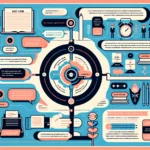The “so…as to” structure is a sophisticated grammatical construction that can significantly enhance your IELTS score when used correctly. This advanced structure demonstrates a high level of English proficiency and is particularly useful in the Writing and Speaking sections of the IELTS test. Let’s delve into the intricacies of this structure and explore how to use it effectively in your IELTS preparation and exam.
Understanding the “So…As To” Structure
The “so…as to” structure is used to express purpose or intention in a more formal and elegant way. It’s equivalent to saying “in order to” but is considered more advanced and sophisticated. This structure is particularly valuable in academic writing and formal speaking contexts, making it ideal for the IELTS exam.
Formula and Grammar Rules
The basic formula for the “so…as to” structure is:
[Subject] + [Verb] + so + [Adjective/Adverb] + as to + [Verb (base form)]
It’s important to note that the verb following “as to” is always in its base form, without “to”.
Examples:
- She spoke so softly as to be barely audible.
- The instructions were written so clearly as to prevent any misunderstanding.
- He arrived so early as to surprise everyone.
 IELTS exam preparation
IELTS exam preparation
Applying “So…As To” in IELTS Writing
In the IELTS Writing task, using the “so…as to” structure can demonstrate your advanced grammar skills and help you achieve a higher band score. Let’s look at how you can incorporate this structure in different parts of your essay.
In the Introduction
Example:
“This essay will analyze the primary causes of urban pollution so as to provide a comprehensive understanding of the issue.”
In the Body Paragraphs
Example:
“Many cities have implemented strict emission regulations so as to reduce air pollution levels.”
In the Conclusion
Example:
“In conclusion, it is crucial for governments and individuals to work together so as to create sustainable solutions for urban environmental challenges.”
Using “So…As To” in IELTS Speaking
The “so…as to” structure can also be effectively used in the IELTS Speaking test to showcase your advanced language skills. Here are some examples of how you might use it in different parts of the speaking test:
Part 1: Introduction and Interview
Examiner: “Do you enjoy reading?”
You: “Yes, I try to read diverse genres so as to broaden my perspective and improve my vocabulary.”
Part 2: Individual Long Turn
When describing a memorable event:
“The organizers decorated the venue so beautifully as to create a magical atmosphere for all the guests.”
Part 3: Two-way Discussion
Discussing environmental policies:
“Governments should invest in renewable energy so as to reduce dependency on fossil fuels and combat climate change.”
Achieving Higher Band Scores with “So…As To”
Using the “so…as to” structure correctly can contribute to achieving higher band scores in both the Writing and Speaking sections of IELTS. Here’s how it can impact your scores:
Band 6-7
At this level, you might use the structure occasionally but may not always use it correctly:
“The company trained its employees so as to improve their skills.” (Correct use)
Band 7-8
More frequent and accurate use of the structure:
“The research was conducted so meticulously as to eliminate any potential errors in the data collection process.”
Band 8-9
Sophisticated and varied use of the structure:
“The government implemented policies so comprehensive as to address not only the immediate economic concerns but also long-term sustainability issues.”
Common Mistakes to Avoid
While using the “so…as to” structure can enhance your IELTS performance, it’s crucial to avoid common errors:
-
Using “to” after “as to”:
Incorrect: “She studied hard so as to to achieve good grades.”
Correct: “She studied hard so as to achieve good grades.” -
Using the wrong verb form:
Incorrect: “The company invested heavily so as improving its infrastructure.”
Correct: “The company invested heavily so as to improve its infrastructure.” -
Overusing the structure:
While it’s a sophisticated structure, overusing it can make your speech or writing sound unnatural. Use it judiciously and vary your sentence structures. -
Misplacing “so”:
Incorrect: “As to so understand the concept better, he took extra classes.”
Correct: “So as to understand the concept better, he took extra classes.” -
Using it with a negative intention:
The “so…as to” structure is typically used for positive intentions. Using it for negative purposes can sound awkward:
Awkward: “He lied so as to deceive his colleagues.”
Better: “He lied in order to deceive his colleagues.”
Conclusion
Mastering the “so…as to” structure can significantly enhance your performance in the IELTS exam. It demonstrates a high level of grammatical proficiency and can be effectively used in both the Writing and Speaking sections. Remember to practice using this structure in various contexts and to use it judiciously alongside other advanced grammatical structures. As you prepare for your IELTS exam, try incorporating “so…as to” in your practice essays and speaking exercises so as to become more comfortable with its usage and to showcase your advanced English skills during the actual test.


